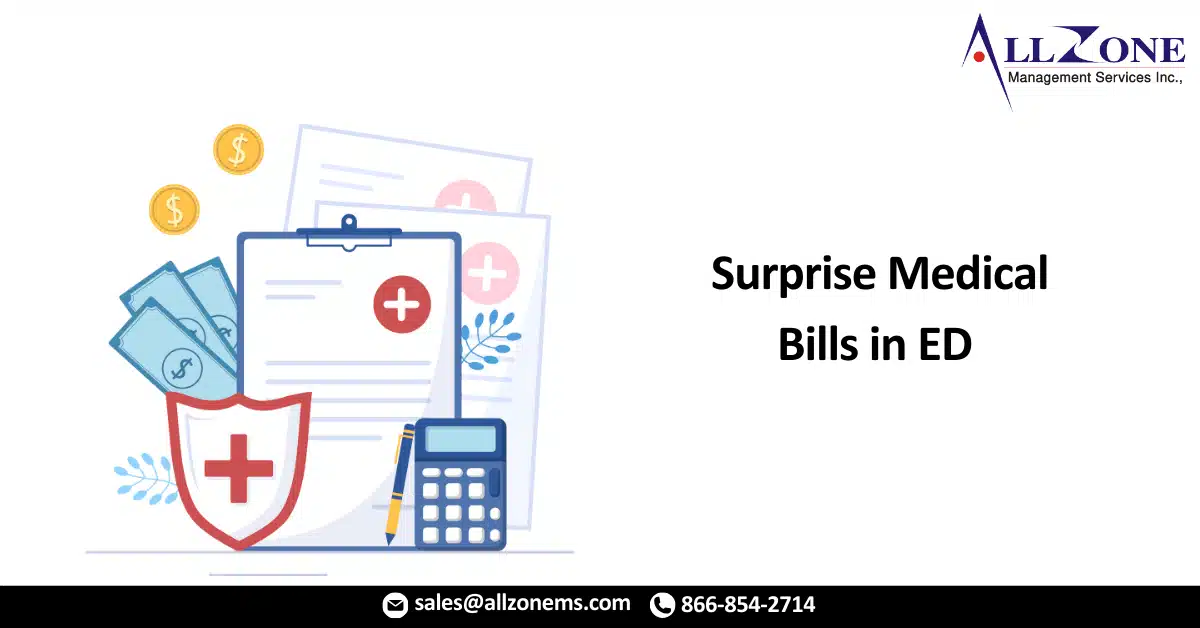Physicians in a hospital’s emergency department (ED) collected significantly more of the charged amount for likely surprise medical bills compared to other patient cases, a new study in Health Affairs reveals.
In the event of a likely surprise medical bill, physicians collected 65 percent of the charged amount compared with just 52 percent for other cases.
Researchers also found using Medical Expenditure Panel Survey (MEPS) data that patients who likely received a surprise medical bill for out-of-network ED services paid physicians over 10 times more versus the amount other ED patients paid, on average.
“It happens to many people where they unexpectedly receive surprise medical bills for many hundreds or even thousands of dollars,” Adam Biener, the principal author of the study and assistant professor of economics at Lafayette College, said in a press release.
“The surprise part comes from not knowing about an extra physician or lab bill when you assumed your insurance would cover everything,” Biener continued. “The reason the bill is large is because that doctor doesn’t have a negotiated payment with your insurance.”
Surprise medical bills are common after an ED visit, largely because about one in five of these visits involve an out-of-network provider, according to previous research. Studies using claims data also show that out-of-network bills are generally greater than if a patient was treated by a clinician part of their insurance plan’s network.
However, a limitation of these studies is that claims data does not tell whether the out-of-network provider sent a balance bill to the patient and, if so, how much the patient ended up paying to that provider, Biener et al. stated in the Health Affairs study.
“This information is key to understanding the burden of surprise bills on patients and the revenue that providers can expect to collect in these scenarios,” they wrote.
Their data showed that 4.9 percent of ED visits involving privately insured adults between 18 and 49 years old likely contained surprise medical bills. That percentage jumped to 15 percent under a less restrictive definition of surprise medical bill in which patients paid a larger percentage of the total physician payment than the total facility payment, regardless of their deductible.
Patients facing these potential surprise medical bill visits paid $151 in out-of-pocket physician payments, on average, versus just $15 for all other ED visits, researchers also reported using MEPS data.
Notably, the out-of-pocket cost average is substantially less than the full outstanding charge net of any payer-paid amount, which averaged $368 in this study for patients facing a surprise medical bill. However, there was still “considerable variation in patient burden for visits with likely surprise bills,” researchers stated.
Additionally, when total physician charges were over $1,000, patients facing a surprise medical bill paid nearly $400, on average, compared to an average of $34 for all other ED patients.
The finding spells trouble for patients, which “can represent a significant burden as many households are not prepared for even a $400 surprise medical bill,” Biener said.
Payment-to-charge ratios for likely surprise medical bills were also higher than those for all other ED visits when the total physician charges for the visit were up to $1,000, researchers reported.
Although, the average physician payment-to-charge ratios for likely surprise medical bill visits decreased as total physician charges increased despite remaining constant for all other ED visits.
Biener et al. stated that their findings suggest that remaining out of network and balance billing patients for ED care may be better for the bottom line in some situations, particularly when bills are smaller.
“Physicians receive a larger fraction of their charges in these situations by remaining out of network than they likely would by being in network,” they wrote in the study. “This in part likely reflects the fact that commercial insurer—allowed amounts tend to be higher for out-of-network emergency physicians than for those in network, in addition to any additional payments collected through balance bills.”
Additionally, the researchers found no evidence that consumer protections under the Affordable Care Act lowered patient payments for out-of-network ED care at an in-network facility.
Lawmakers have room to enact more consumer protections to save patients more than $64 million per year in additional out-of-pocket costs for out-of-network ED care, researchers stated.
Healthcare organizations and payers will be subject to new surprise billing restrictions starting next year under the No Surprises Act.
Passed in December 2020, the law will make it illegal for providers to bill patients more than in-network cost-sharing for out-of-network services. It will also establish an arbitration process to resolve unexpected out-of-network charges.
For More Information: https://revcycleintelligence.com/news/physicians-collect-more-from-surprise-medical-bills-in-ed

